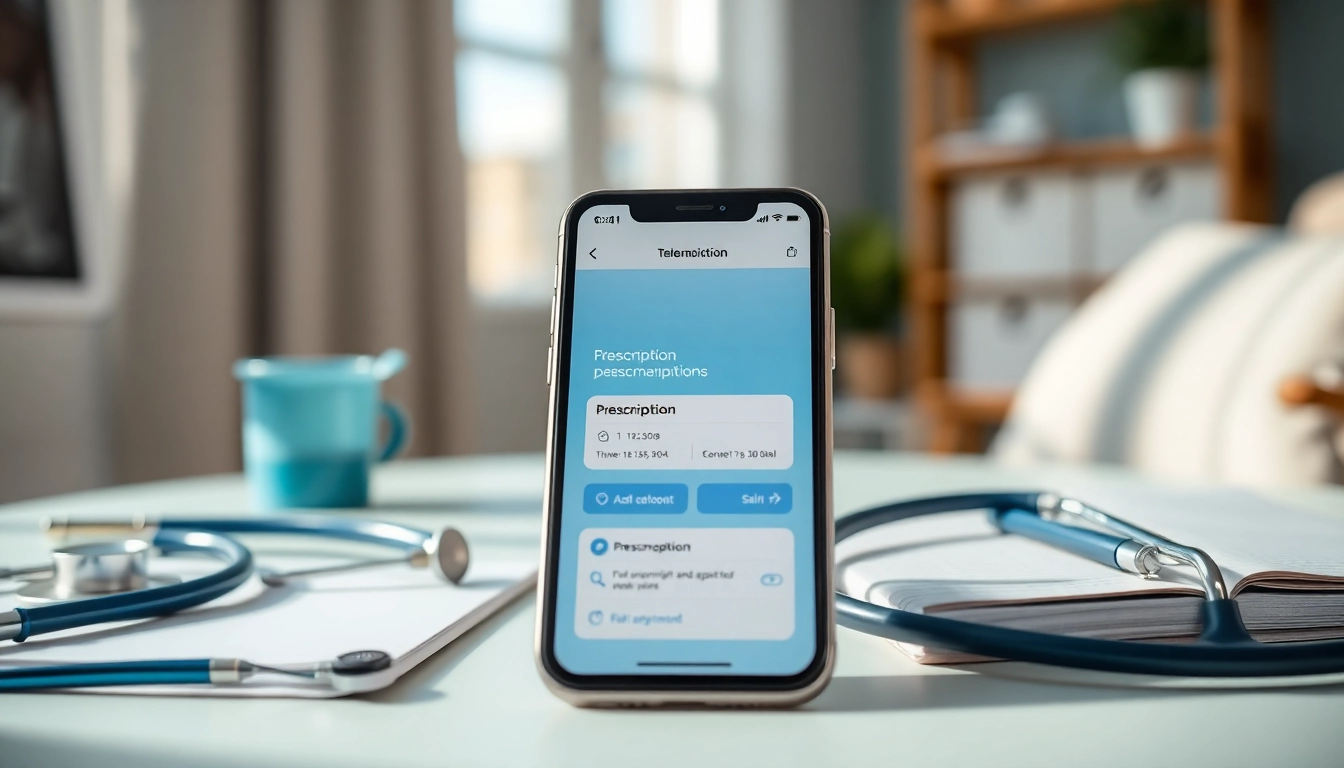Understanding Top Rated Prescription Applications
What Are Prescription Applications?
Prescription applications, also known as medication management apps, are digital tools designed to help patients manage their prescriptions more effectively. These applications offer a wide array of features that simplify the process of ordering, refilling, and managing medications. They serve both patients and healthcare providers by ensuring accurate medication administration, tracking adherence, and providing information about each prescription.
In the rapidly evolving landscape of healthcare technology, the rise of top rated prescription applications has transformed how patients interact with their medications. Through mobile and web platforms, users can gain easy access to their prescription information, receive reminders for medication schedules, and communicate with healthcare professionals.
Key Features of Top Rated Prescription Applications
The effectiveness of prescription applications hinges on various features that enhance user experience and ensure optimal medication management. Here are some essential features commonly found in top-rated applications:
- Medication Reminders: Users can set reminders to take their medications at specific times, ensuring adherence to prescribed regimens.
- Prescription Refill Requests: The ability to request prescription refills directly through the app streamlines the process, allowing patients to avoid late refills.
- Drug Interaction Checks: These applications often include features that automatically check for contraindications between different medications, helping to avoid adverse effects.
- Health Tracking: Users can track health metrics and symptoms related to their medication, giving healthcare providers a clearer picture of treatment effectiveness.
- Patient Education Resources: Many top-rated applications integrate educational resources that help users understand their medications, which contributes to better adherence and safety.
Benefits of Using Prescription Applications
The adoption of prescription management applications confers several benefits on both patients and healthcare professionals:
- Improved Compliance: By providing reminders and simplifying the refill process, these applications help improve adherence to medication regimens.
- Enhanced Patient Safety: Access to drug interaction warnings and educational materials empowers patients to take charge of their health, reducing the likelihood of medication errors.
- Convenience: Patients no longer need to call pharmacies or schedule appointments for simple refills, as everything can be managed through the app.
- Better Communication: These applications facilitate smoother interactions between patients and healthcare providers, ensuring that any questions or concerns regarding medications are promptly addressed.
Choosing the Right Prescription Application
Evaluating User Needs and Preferences
When selecting a prescription application, it is crucial to evaluate the specific needs and preferences of the user. Different demographics may require varied functionalities. For instance, older adults might prioritize user-friendly interfaces and larger text, while tech-savvy millennials may seek integrations with smart devices and advanced features. Some considerations include:
- Usability: Assess whether the interface is intuitive and accessible for the intended audience.
- Customization: Determine if the application allows for personalization, enabling users to set preferences that enhance their experience.
- Compatibility: Look for apps that integrate effectively with existing health monitoring devices or other health platforms.
Comparing Features and Usability
Once user preferences have been assessed, it’s time to compare different applications based on features and usability. Key points to evaluate include:
- Feature Set: Examine the array of features offered by each app and how they align with user needs.
- User Reviews: Look at ratings and reviews from existing users to gauge satisfaction levels and highlight common issues that may arise.
- Free Trials: Many applications offer free trials; taking advantage of these can help find the best fit without committing financially.
Exploring Cost and Value Options
Cost is often a significant factor in selecting a prescription application. While many apps are free to download, some may offer premium features at a cost. Evaluating the cost in relation to the value offered is essential:
- Free vs. Paid Features: Understand what is available for free and what requires payment to ensure users are not missing out on crucial functionalities.
- Long-term Value: Consider the long-term costs associated with subscription models versus one-time payments to find the most economical option.
Integrating Prescription Applications into Healthcare Practices
Steps for Effective Implementation
The successful integration of prescription applications into healthcare practices requires careful planning and execution. Here are steps to ensure smooth implementation:
- Define Objectives: Establish clear goals for how the application will be used within the practice to guide its integration.
- Engage Stakeholders: Involve both healthcare providers and patients in the selection process to ensure diverse needs are met.
- Pilot Program: Consider launching a pilot program to evaluate the app’s effectiveness before a full rollout.
Training Staff and Users
Training is critical to ensuring that both staff and users can navigate the application effectively:
- Comprehensive Training Sessions: Conduct sessions to familiarize staff and patients with the application, covering all essential features.
- Ongoing Support: Establish support channels for users to get assistance when utilizing the application post-launch.
Monitoring Performance and User Feedback
Once implemented, continuous monitoring is necessary to gauge the application’s impact:
- Collect Feedback: Regularly solicit feedback from users to identify potential areas for improvement and ensure satisfaction.
- Performance Metrics: Use specific metrics, such as adherence rates and user engagement levels, to assess the application’s effectiveness in improving patient health outcomes.
Common Challenges with Prescription Applications
Data Privacy and Security Concerns
As with any digital health tool, prescription applications must prioritize data privacy and security. Users share sensitive information that could be misused if proper precautions aren’t taken:
- Encryption: Ensure that the application uses robust encryption standards to protect user data.
- Compliance with Regulations: Verify that the app complies with healthcare regulations such as HIPAA to safeguard patient information.
User Adoption and Engagement Issues
Even the best applications can face challenges with user adoption and engagement. Key tactics to enhance engagement include:
- Incentives: Consider offering incentives for users to regularly engage with the application, such as rewards for medication adherence.
- Regular Updates: Keep the application fresh and engaging with regular updates that introduce new features or enhance usability.
Maintenance and Updates
Ongoing maintenance and updates are necessary to keep the application functioning optimally:
- Regular Audits: Conduct audits on the features and performance of the application to identify areas for improvement.
- Feedback Loop: Create mechanisms for users to provide feedback on functionality issues, ensuring that these are addressed promptly.
Future Trends in Prescription Applications
Emerging Technologies Shaping the Field
As technology continues to advance, emerging technologies are set to further enhance prescription applications:
- Artificial Intelligence: AI can personalize medication regimens based on individual health data, leading to more tailored patient care.
- Telehealth Integration: The integration of telehealth functionality will become increasingly important, enabling seamless communication between patients and providers.
Patient-Centric Customizations
The trend towards patient-centric care will further drive the customization of prescription applications:
- Personal Health Profiles: Applications will allow users to create profiles that tailor functionalities based on their unique health needs.
- User-Driven Design: Future applications will prioritize user feedback to refine features and usability, ensuring they meet patient needs effectively.
Integration with Other Health Platforms
Seamless integration with other health platforms will remain a key trend, enhancing the overall patient experience:
- Wearable Technology: Many prescription applications will interface with wearable devices to monitor health metrics directly from users’ physical activities.
- Healthcare Ecosystems: Creating interconnected systems where data from multiple sources can inform prescription decisions and health tracking will enhance the overall care process.



